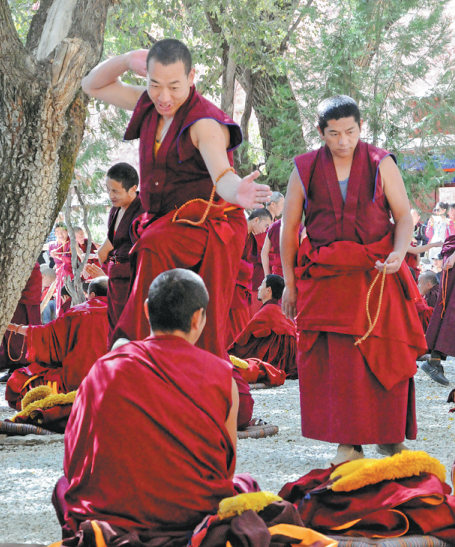Lhasa to see during winter
The local government and tourism organizations have launched a 'tourism loop' that provides the best the region has to offer in the cold season, report Yang Feiyue in Beijing and Palden Nyima in Lhasa.
By Yang Feiyue and Palden Nyima | China Daily Global | Updated: 2020-01-14 08:19

Shongba Lhachu Temple-Nyethang Giant Buddha-Drolma Lhakhang Temple-Dakdong village
Visitors can spend the first morning visiting three historical sites near Lhasa's downtown.
Many locals walk around the holy fountain at the Shongba Lhachu Temple in Doilungdechen district. They use the holy water at a park outside the temple to wash their heads and faces to rid themselves of disease and wash away their sins.
About 12 kilometers away in Chushul county sits the Nyethang Giant Buddha, which was carved into the mountainside by Atisa, an 11th-century Indian Buddhist.
From there, visitors can explore the Drolma Lhakhang Temple, which is about 10 minutes' drive away and was built to commemorate Atisa. The delicate wooden engravings are breathtaking.
Dakdong village is a half-hour drive from downtown Lhasa. It has become a popular hot spring resort. Travelers can enjoy dozens of pools of various shapes and sizes, as well as leisure activities, such as mahjong.
Shukseb Temple-Junba village-Nyemo county-Thonmi Sambhota's former residence
Shukseb Temple is about 27 km from Dakdong village and is the biggest nunnery in Lhasa. It sits 4,400 meters above sea level and offers close contact with Tibetan eared pheasants, which live mainly in the forests, bushes and tundra on the mountain.
Visitors can see cattlehide boats at Junba village. A boat usually needs four to five whole yak skins and 15 days to finish. The older the skin, the better. Cattlehide boats have been used by local fishing villages since ancient times and can carry loads up to 1,500 kilograms.
Travelers can then appreciate the charm of distinctive Tibetan paper, incense and carvings at Nyemo county, a 40-minute drive away. Thonmi Sambhota's former residence in the county's Thonba township gives visitors a taste of the life led by the creator of the Tibetan script, as well as access to murals that date back more than 1,300 years. The black-and-gold murals on the right wall of the entrance are particularly rare.
























